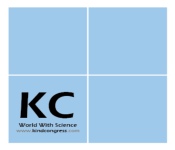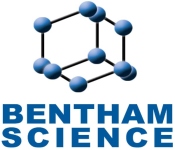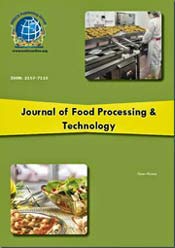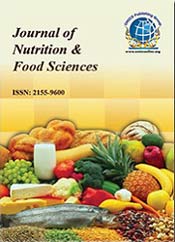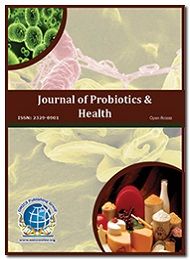Theme: Discovering the new advances on food and nutrition for new generation
Nutri Food 2018
- About Food and Nutrition conference
- Sessions/Tracks
- Market Analysis Report
- Past Conference Report
- New Updates- Nutri Food 2018
About Nutri Food 2018
Nutri Food 2018 welcomes all the delegates and participants from far and wide the world to attend World Congress on Food and Nutrition during December 10-12, 2018 in Dubai, UAE. The conference highlights the theme” Discovering the new advances on food and nutrition for the new generation” The conference organizes comprise effective keynote lectures, plenary presentations, poster sessions, young researcher sessions from the distinguished scientists, researchers and brilliant students across the globe creating a platform for information exchange and knowledge transfer. The lectures were designed on current and emerging areas of food and nutrition research which include Food, Nutrition and Health, Nutraceuticals and Nutrition, Food Technology, Nutrition and Dietetics, Nutrition and Dietetics, Animal and Plant Nutrition, Prebiotics and Probiotics Nutrition, Renal Nutrition and Metabolism, Food and Nutrition Disorders, Malnutrition and Malnourishment, Food Industry, Medicinal Food, Food Toxicology, Food safety and management, Advanced Food Analysis Techniques, Food And Nutrition Therapy, Indigeneity and Food, Obesity Diabetes Cardiovascular diseases, Gastrointestinal diseases.This world Conference on Food and Nutrition moreover enables the dynamic speculation of energetic understudy investigators as we are encouraging Poster Award Competition and Young research Forum at the gathering set.
Why To Attend?
Discovering the new advances on food and nutrition for the new generation which implies just not to investigate the on-going new development rather it could be extended to all conceivable ways which will be co-operative in more and more advanced research in this rising field. Food innovation can be utilized to propel such a significant number of features of the present reality. This conference also focuses on a wide variety of current research on Food and Nutrition that have both useful and harmful effects on the safety and quality of foods, and are thus a concern of public health about on Food and Nutrition that have both valuable and unsafe impacts on the security and nature of foods and nutrition, and are thus a concern of public health.
Target Audience
- Food Technologists
- Nutritionists
- Clinical Nutritionists
- Dieticians
- Health Care Professionals
- Nutrition Associations and Societies
- Integrated Health Promoters
- Fitness Professionals
- Clinical Research Scientists
- Food Science and Nutrition Science Societies
- Food Industrialists
Track 1: Food, Nutrition and Health
Food is one that nourishes the body, may also be defined as any substance eaten or drunk which meets the needs for energy, bodybuilding, regulation, and protection of the body. Eating right kind of food in right amounts ensures good nutrition and health. Nutrition is food that work in the body. It includes everything that happens from eating food to its usage in various functions of the body. Nutrients are components of foods needed for a body in adequate amounts for proper growth, reproduction and leading a normal life. The first function of food is to provide energy; the body needs the energy to sustain involuntary processes essential for continuing life. Another important function is bodybuilding. An infant at birth weighs 2.5-3.0 kg and grows to 50-60 kg during adulthood, which is possible only if right food in the right amount is given from birth to adulthood. Food controls the activities of the body including – heartbeat, maintaining body temperature, muscle contraction, water balance, blood clotting and removal of waste products from the body and helps in improving the immune system and improves resistance power of the body.
-
Chemistry of food, nutrition and human energy
-
Ethnic foods and community nutrition
-
Human nutritional and dietary needs
-
Processed and unprocessed foods: Health Implications
-
Food flavours, the taste of food and preferences
Track 2: Nutraceuticals and Nutrition
Nutraceuticals are food or part of food playing an important role in keeping normal physiological function that maintains healthy human being. The food products which are used as nutraceuticals can be categorized as dietary fibre, prebiotics, probiotics, polyunsaturated fatty acids, antioxidants and other different types of herbal/ natural foods. These nutraceuticals fight against some of the key health problems such as obesity, cardiovascular diseases, cancer, osteoporosis, arthritis, diabetes, cholesterol etc. The demand for nutraceuticals has increased over the past few years and they are being used by people for various therapeutic outcomes.
-
Bioactive nutraceutical
-
Dietary fibre
-
Dietary Supplements
-
Functional Foods
-
Poultry and Animal Nutrition Products
-
Human Diet
-
Clinical nutrition
Track 3: Food Technology
Food technology is the production processing for making food. Food technologists apply their knowledge about food science to operate, design and manage the facilities and equipment involved in the processing and storage of foods. Due to the insufficient uptake of certain vitamins and mineral, many diseases are now caused. Food technologists are now working on foods which will not get spoilt easily and will also provide essential nutrients to the body. Food technology research has reached an advanced the nutrition research field.
-
Food microbiology
-
Food engineering
-
Nanotechnology and food production
-
Biotechnology in food science
-
Food packaging
Track 4: Nutrition and Dietetics
The food we eat has a significant impact on our health, change in diet can help avoid or control many health problems like obesity, diabetes and certain risk factors for cancer and heart disease. Dietetics is the science deals with how food and nutrition disturbs human health. Dietetics has a strong prominence on public health. Dietician nutritionists apply nutrition and food science to help people progress their health and provide care and consultation to patients. A balanced diet is a cornerstone of health. All the age of people should enjoy a variety of healthy foods from all of the foods groups, including whole grains, fruits, vegetables, healthy fats, low-fat or fat-free dairy and lean protein. But women also have special nutrient needs (women’s diet and nutrition) and, during each stage of a woman's life, these needs change.
-
Nutritional requirements
-
Diet in women
-
Pediatrics diet
-
Dietary fats
-
Dietary managements
Track 5: Nutrigenomics and Nutrigenetics
The Nutritional genomics emphases on the interface between bioactive food components and the genome, which consist of Nutrigenetics and Nutrigenomics. Nutrigenomics and Nutrigenetics are focused on the association among human genes and nutrition that means how genetic variation affects due to nutrients. Nutrigenetics examines how a body counters to nutrients based on genetics and Nutrigenomics studies how nutrients affect body’s expression of genes. Information that is related to nutrigenetics and nutrigenomics help to inhibit, treats, or even cure certain diseases.
-
Foodomics
-
Obesity
-
Antiaging
-
Cancer
-
Nutrigenetic analysis method
-
Environmental factors
Track 6: Animal and Plant Nutrition
Food is the essential thing for both plant and animals to survive .plants are Autotrophic, they prepare their own food providing some of it to other organisms. Whereas Animals are Heterotrophic, they cannot build their food inside themselves and intake from other plants or animals. One prepares its own food and one depends on other for food. Plants require light, water and about 20 elements known as essential elements to meet all their biochemical needs. Some plants cannot produce their own food and must obtain their nutrition from outside sources these are parasitic or saprophytic. Some plants are mutualistic symbionts, epiphytes, or insectivorous. Most animals take their nutrients by the ingesting of other organisms. The molecules necessary function for animals are amino acids, lipid molecules, nucleotides, and simple sugars and the food consumed consists of protein, fat, and complex carbohydrates. Animals convert these macromolecules into the simple micro molecules essential for keeping cellular functions. The conversion of the food consumed to the nutrients involves digestion and absorption. During digestion, food particles are broken down into smaller components, and later, they are absorbed by the body.
-
Consumer trends and nutritional behaviours
-
Animal and plant nutrient sources
-
Modes of nutrition
-
Vegetarian, vegan and other dietary systems
-
Minerals required by plants
Track 7: Prebiotics and Probiotics Nutrition
Prebiotics are the elements that come mostly from fibres, and indigestible food components that promote the growth of helpful bacteria in our gut and that human can’t digest. They help in improving gastrointestinal health as well as potentially increase calcium absorption. The fruits like bananas, onions, garlic and whole grains naturally contain prebiotics. Prebiotics comprise fructooligosaccharides and galactooligosaccharides. Probiotics are live microorganisms which when consumed may give a health benefit to the host. Certain species of Lactic Acid Bacteria (LAB) and Bifidobacterium spp. are usually used in the manufacture of probiotic products. Probiotics promote the inherited disorder, reduce lactose intolerance, decrease diarrhoea incidence, management infections, act as antibiotics, suppress tumours, and shield against carcinoma. Foods such as yogurt, kimchi, and naturally contain probiotics. A few probiotics naturally found in foods are Bacillus coagulants and Saccharomyces boulardii. Probiotics slow the growth of harmful bacteria and facilitate in maintaining the function and strength the barrier provided by intestinal walls.
-
Foods rich in prebiotic fibre
-
Foods rich in probiotic fibre
-
Difference between prebiotics and probiotics
-
Health benefits using prebiotics
Track 8: Renal Nutrition and Metabolism
Renal nutrition is concerned with making certain that excretory organ patients eat the proper foods to make dialysis efficient and improve health. A diet prescribed in chronic renal failure and designed to regulate the intake of protein, potassium, sodium, phosphorus, and fluids, depending on individual conditions. Carbohydrates and fats are the principal sources of energy. Protein is less in number; the amount is determined by the patient’s condition. Milk, eggs, meat, cereals, vegetables, fruits, bread, rice and pasta are the primary sources of calories. The key points of renal nutrition are eating more high protein foods, and less high salt, high potassium, high phosphorus foods. The low potassium level of the diet also makes it useful in hyperkalemia. The diet could also be nutritionally inadequate and should be supplement with vitamins and electrolytes.
-
Renal supplements
-
Nutrition for renal patients
-
Abnormalities in renal metabolism
-
Pre-dialysis renal diet
Track 9: Food and Nutrition Disorders
Nutritional Disorder is caused by due to intake of insufficient food or of bound nutrients, an inability of the body to absorb and use nutrients, or by overconsumption of certain foods. In other words, Nutritional Disorder is that the nutritionary imbalance that is because of either overnutrition or undernutrition. It may cause by the presence of toxin within the diet. They may include deficiencies or excesses in the diet, obesity and eating disorders, and chronic diseases such as cardiovascular disease, hypertension, cancer, and diabetes mellitus. Nutrition deficiency diseases include developmental abnormalities that can be prohibited by diet. Hereditary metabolic disorders that respond to dietary treatment, the interaction of foods and nutrients with drugs, food allergies, and intolerances in the food supply. When vitamin levels so much exceed the body’s needs and the body stores these excesses they can cause vitamin toxicity.
-
Vitamins and mineral deficiency
-
Food borne allergy and intolerance
-
Iodine deficiency disorder
-
Food allergy and intolerance
-
Toxin in food
-
Life style related disorder
-
Food intolerance disorder
Track 10: Malnutrition and Malnourishment
By taking excesses or imbalances intake of energy and nutrients deficiency disease that is malnutrition occurs. The terms malnutrition consists of 2 main teams of conditions undernourished and overnutrition. When the body doesn’t get enough nutrients this type of malnutrition is called undernutrition and while the body gets too many nutrients this condition is called overnutrition. Due to the nutrient loss, excessive dieting and less intake of nutrient diarrhoea, excessive sweating, kidney failure, food allergies, severe injury, serious illness, and a lengthy hospitalization can be caused. Nutritional deficiencies have generally been the leading causes of death and disability. Poverty and lack of food are the primary reasons for the occurrence of malnutrition.
-
Protein-energy malnutrition
-
Major micronutrients deficiency
-
Malnutrition in women and teenagers
-
Malnutrition in pediatrics patients
-
Malnutrition therapy
Track 11: Food Industry
The term food industries cover a series of industrial activities that includes the processing, conversion, preparation, preservation, packaging of foodstuffs and that supplies most of the food consumed by the world population. The raw materials used are generally of vegetable or animal origin and produced by agriculture, farming, breeding, and fishing. Some food processing techniques, such as freezing, preserve the nutritional content and other methods, such as cooking, can also improve nutritional content. Further, preserved food is available for much longer time periods than non-preserved foods. The main advantage to processing foods is the ability for producers to ensure food safety and remove or prevent dangerous toxins. For example, Milk pasteurization, removes harmful bacteria from raw milk, making it suitable for human consumption. Food processing methods that remove water, such as drying and smoking, reduce the possibility of bacterial growth because the bacteria rely on the water to grow and multiply.
-
Manufacturing
-
Agriculture and agronomy
-
Food industry technology
-
Preserving techniques
-
Food processing
Track 12: Medicinal Food
Food acts as medicine which helps the body to prevent some diseases. The food that we consume in diet play a vital role in controlling inflammation levels helps the digestive organs to process and eliminating waste, balancing blood sugar, controlling blood pressure and cholesterol level (cardiovascular health) and many more. Medicinal food includes anti-inflammatory foods and anti-inflammatory components of certain foods and herbs are linked with lowered inflammation. The Healing diet begins with a high menu in vegetables, fruits, sprouted seeds rich in omega-3, fruits, wild meats and these anti-inflammatory foods can prevent the way inflammation affects our bodies and our lives. The healing foods diet will introduce you into a total health transformation and this diet is designed to help overcomes from diseases like Diabetes, Heart Disease, Digestive disorders, Fatigue, Depression, Hormone imbalance, and Cancer prevention. The major groups of anti-inflammatory foods are green leafy vegetables, walnuts, coconut oil beets, broccoli, fruits like pineapple, blueberries, salmon etc.
-
Bioactive nutraceuticals
-
Organic herbs
-
Role of medicinal food in nutrition
-
Anti-inflammatory foods
-
Healing food diet
Track 13: Food Toxicology
The food contains characteristic chemicals, including starches, sugars, proteins, and vitamins. However, a few foods contain harmful characteristic poisons. Once in a while, a poison is available as a normally happening pesticide to avoid bug attack or to shield the plant from waste when harmed by climate, dealing with, UV light or organisms. Food Toxicants covers distinctive perspectives from the field of toxicology including applications to identify sustenance allergens, hereditarily adjusted living beings.
-
Safe and healthy food
-
Genetically modified food
-
Food allergy
-
Food toxicants and there control methods
-
Food additives and food contaminants
Track 14: Food safety and Management
Food hygiene means to ensure the safety of food from production to consumption. Food can become contaminated at any point during harvesting, processing, storage, distribution, transportation, and preparation. Food safety includes handling, storing and preparing food to inhibit infection and to make sure that food keeps enough nutrients to have a healthy diet. So unhygienic food can also cause poor nutrition. The Food Safety Management System (FSMS) provides a preventative methodology to detect, prevent and decrease food-borne hazards. This is to decrease the risk of food poisoning and to make food safe for consumption.
-
Microbiology spoilage prevention and control
-
Food hygiene
-
Product safety assessment of food
-
Food allergies
-
Importance of food safety education
-
Food safety regulations and guidelines
Track 15: Advanced Food Analysis Techniques
Strategies in food analysis applied to food products manage the standards and the obtained tools of nourishment examination, emphasizing fruit and vegetable products. Nourishment examination is the way toward deciding the healthful substance of food and nourishment items. The procedure can be performed through an assortment of techniques. Food examination is the train managing the application, study and advancement of logical methodology for describing the properties of nourishments and their constituents. These scientific methodologies of analytical techniques in food safety are utilized to give data about a wide range of attributes of food, including their arrangement, structure, physicochemical properties.
-
Food and drug analysis
-
Chemical analysis of food
-
Laboratory analysis
-
Dietary management
Track 16: Food and Nutrition Therapy
Food and Nutrition Therapy is a total dietetics practice which gives wide, evidence-based sustenance treatment for everybody, new-born children, kids, and grown-ups. Nutritious Therapy expands one's wellbeing potential however exclusively planned nourishing and method of life changes. It empowers the advantages of healthy, good, natural nutrition for perfect prosperity, and also the remedial impacts of specific nourishments for particular wellbeing conditions. Nourishing Therapy distinguishes the nutrition that makes look and feel best. The essential objective of nutrition therapy for diabetes is to accomplish great glucose control.
-
Medical nutrition therapy
-
Life changing tools
-
Food for different medical condition
-
Importance of nutritional therapies
Track 17: Indigeneity and Food
"Indigenous food" can in a split second resound with commodification rehearses, post-expansionism, food uncertainty, gender-role associations, and so forth. Then again, we may watch the development of counter-developments, for example, elective nourishment systems, food legacy safeguarding, nourishment power, gender activism, nourishment and atmosphere activity, among others. These counter-developments hold diverse stakes and bear different plans yet they all have a similar target: Regaining control. As fascinating as it can be to draw a moral line between the former historical constructs and social practices and the subsequent counter movements, social reality should not be surrounded in such mechanism.
-
Indigenous as the new healthy
-
Indigenous food & host society
-
Indigenous methods of food preparation
-
Tourism & indigenous food
-
Indigeneity & food education
-
Food indigeneity & sustainable farming
-
WHO policies on world nutrition
Track 18: Obesity, Diabetes, Cardiovascular Diseases, Gastrointestinal Diseases
The gastrointestinal tract plays a key role in obesity through its contributions to satiation and satiety, production of gut hormones that influence appetite, absorption of nutrients that ultimately determine the positive energy balance that results in obesity, changes in bile acids and the micro biome, and the metabolic products of microbial digestion of nutrients (short-chain fatty acids) that modify some of the metabolic factors that are associated with obesity. Obesity usually is associated with morbidity related to diabetes mellitus and cardiovascular diseases. However, there are many gastrointestinal and hepatic diseases for which obesity is the direct cause (e.g., non-alcoholic fatty liver disease) or is a significant risk factor. When obesity is a risk factor, it may interact with other mechanisms and result in earlier complicated diseases. There are increased odds ratios or relative risks of several gastrointestinal complications of obesity: gastroesophageal reflux disease, erosive gastritis, gastric cancer, diarrhoea, colonic diverticular disease, hepatocellular carcinoma, acute pancreatitis, and pancreatic cancer. Gastroenterologists are uniquely poised to participate in the multidisciplinary management of obesity as physicians caring for people with obesity-related diseases, in addition to their expertise in nutrition and endoscopic interventions.
-
Coronary heart disease
-
Stroke
-
Atherosclerosis
-
Damage to the circulatory system
-
High blood pressure
World Conference on Food and Nutrition to be held during December 10-12, 2018 at Dubai, UAE. Conference will explore the advances in food nutrition and health, food technology, Nutrigenomics and Nutrigenetics, food safety management etc.
Importance and Scope
The significance of food and nourishment in human improvement is generally perceived in both high pay and middle to low-salary nations. Lack of healthy sustenance in the entirety of its structures adds up to a significant weight on national wellbeing frameworks as well as the whole social, social and monetary texture of countries, and is the best hindrance to the satisfaction of human potential. Putting resources into nourishment, accordingly, bodes well since it diminishes medicinal services costs, enhances efficiency and financial development and advances training, scholarly limit and social improvement for present and who and what is to come. Besides, great sustenance is a human right. Nourishment security envelops numerous rights, particularly the privilege to sufficient sustenance and to the most noteworthy achievable standard of wellbeing. It incorporates youngsters' rights to nourishment, wellbeing, and care and also survival and advancement. Other than that, it includes ladies' entitlement to fitting administrations regarding pregnancy, and the post-natal period alongside satisfactory sustenance amid pregnancy and lactation. Sustenance is perpetually vital in the light of the on-going monetary and nourishment value emergencies.Indigenous populaces in remote areas consistently find it is difficult to get to nutritious sustenance. As Indigenous people group lost access to their customary land, processed, western-style nourishments supplanted conventional nutritious eating methodologies. Frequently, the main sustenance accessible today in remote Indigenous people group is modest, prepared and exceptionally undesirable. The normal of wellbeing in urban and provincial Indigenous social orders can't recuperate without activity focusing on nourishment, numerous Indigenous people group attempting to pay for costly new sustenance. In Australia, the challenge to ensure sufficient wholesome intake for the whole populace represents a noteworthy issue. Expansive quantities of Australians encounter corpulence because of poor direction for living while others, for example, those in remote Indigenous people group, are sustenance unreliable in light of the fact that they don't approach reasonable solid nourishment.
Why Dubai?
Dubai is a city in the United Arab Emirates, situated inside the emirate. The emirate of Dubai is situated on the southeast shoreline of the Persian Gulf and is one of the seven emirates that make up the nation. It has the most populace in the UAE (2,106,177) and the second-biggest land an area by territory (4,114 km2) after Abu Dhabi. It is one of only a handful couple of urban communities on the planet that has withstood such a quick transformation from an obliging start as a pearl-jumping focus - to one of the quickest developing urban areas on earth. Dubai nowadays is a business endeavour, exchange and supply center. It is conjointly thought of dynamic core of the Arabian Gulf area. With year-round sunshine, intriguing deserts, gorgeous beaches, deluxe hotels and shopping malls, fascinating heritage attractions and a thriving business community, Dubai receives millions of leisure and business visitors each year from around the world is one of the few cities in the world that has withstood such a rapid conversion- from a courteous beginning as a pearl-diving centre - to one of the fastest growing cities on earth and has attained itself the name of being the ‘gateway between the east and therefore the west'.
Market Research Globally
US is the biggest market for sports nutrition on the planet and the class encountered another positive year, with current retail esteem development of 11% of every 2016 to achieve US$6.7 billion. In 2016, development was driven by the fast extension of its statistic base. While sports nutrition items beforehand focused on center competitors and bodybuilders, more prominent quantities of easy-going clients have started utilizing the items as they are more mindful of protein's medical advantages and of the significance of dynamic ways of life. Notwithstanding more youthful easy-going clients, more moderately aged and elderly buyers are occupied with sports exercises including simple exercise like strolling. Senior purchasers will keep on showing more prominent enthusiasm for taking games nourishment items to pick up the protein that keeps up bulk and manage ideal levels of protein admission. Games sustenance makers are gaining the extending market by propelling new items with less mind-boggling plans, more advantageous configurations and more extensive conveyance in more much of the time went to basic supply channels. The new items and expanded accessibility through more well-known channels have upheld the development of games sustenance industry in the US.
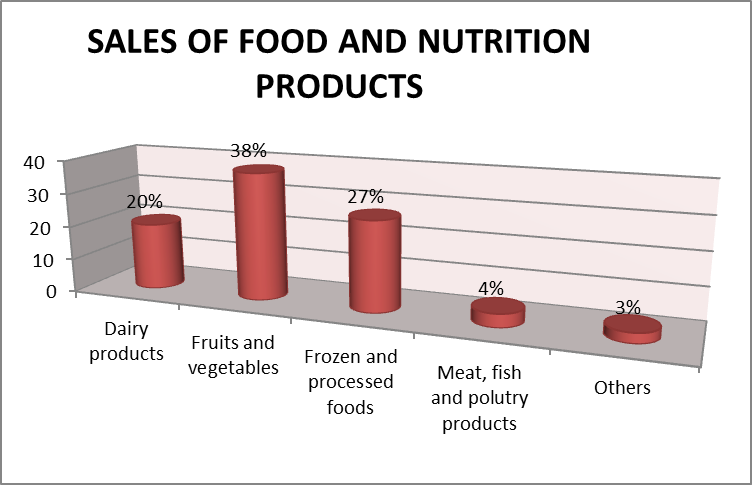
The worldwide nourishment and refreshment industry is developing at 3.5% a year and is relied upon to be worth more than US$7 trillion by 2014. Key patterns for new item improvement are in wellbeing, comfort, neutrality and maintainability. New sustenances in view of leafy foods satisfy a large number of the requests of the top notch shopper. The characteristic "wellbeing radiance" of common deliver make fixings got from foods grown from the ground very looked for after in the worldwide commercial center. The market for practical nourishments – sustenances that offer advantages past fundamental sustenance – is one of the quickest developing fragments of the worldwide nourishment industry. Nourishments and refreshments that offer approved wellbeing claims represent around US$25 billion of worldwide deals, he more extensive utilitarian sustenance advertise, including rehydration and games beverages and food with milder wellbeing claims, is assessed to be worth around US$200 billion.
The food that eaten can directly affect the capacity to appreciate life to its fullest. Maybe the most evident beneficial outcome of sustenance is the pleasurable inclination you from eating a decent tasting dinner. It may be a plate of barbecued chicken, old-fashioned corn, crisp vine-aged tomatoes, and a heated potato, or a steaming dish of spaghetti finished with a lively tomato sauce. The eating regimen can have long-haul impacts on wellbeing too. Eating routine assumes a noteworthy part in advancing and keeping up great wellbeing, keeping some incessant infections and treating others, and speeding recuperation from wounds. In prior circumstances, maladies, for example, goiter and pellagra were moderately normal—both are caused by nutritious lacks and cured by diets containing adequate measures of a specific supplement. On account of goiter, iodine is the missing supplement; with pellagra it is for the most part niacin, a B vitamin. These infections are uncommon today in the United States in light of the fact that most Americans get enough of these fundamental supplements in their diets. Great sustenance amid youth and puberty is basic for development and improvement, well-being and prosperity, and the counteractive action of some ceaseless illnesses. However numerous American kids' eating regimens miss the mark regarding prescribed dietary guidelines. Moreover, terrible eating routine and physical inertia, bringing about a vitality irregularity, are the most vital variables adding to the expansion in corpulence in youth.
Prebiotics and Probiotics: Ingredients, Applications and Global Markets
Probiotics advertise measure was a significant billion as far as fixing deals in 2017. Capacity sustenance utilization is viewed as a noteworthy industry incline profiting worldwide probiotics advertise development. This pattern is getting prominent as buyers are progressively getting to be mindful of the connection between nourishment, eating routine, and wellbeing. Worldwide probiotics market may accomplish picks up at some % and will increment in development by 2023

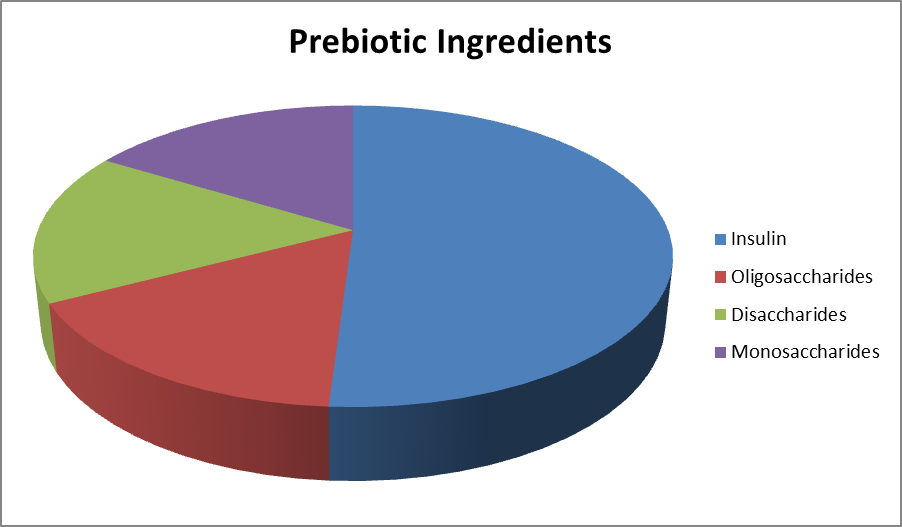
Nutraceuticals: Global Markets
The worldwide nutraceuticals advertise investigation was regarded at USD 275.35 billion in 2017. Expanding danger of illnesses, for example, hypertension, weight, diabetes, and cholesterol are relied upon to build item request over the evaluated period. The mind-boggling expense related with medicinal services medications has brought about developing buyer enthusiasm for nutraceuticals in the course of recent years. Nutraceuticals give wellbeing and therapeutic advantages and improve the fundamental nutritive estimation of sustenance and furthermore give basic supplements as dietary supplements and utilitarian nourishments and refreshments. Worldwide patterns are inclining toward customized nourishment, wherein nutraceuticals are relied upon to assume a noteworthy part.

Middle East-
The Middle East and Africa have particularly high development in female work interest. The child populace is currently near 200 million. These two actualities hold the way to clarifying solid market development. Saudi Arabia is by a wide margin the biggest market in the area and has seen twofold digit development for as long as three years. As moms have increased expanding consciousness of their children's' dietary needs, the interest for sustenance items that are characteristic, strengthened and offer medical advantages has been rising.
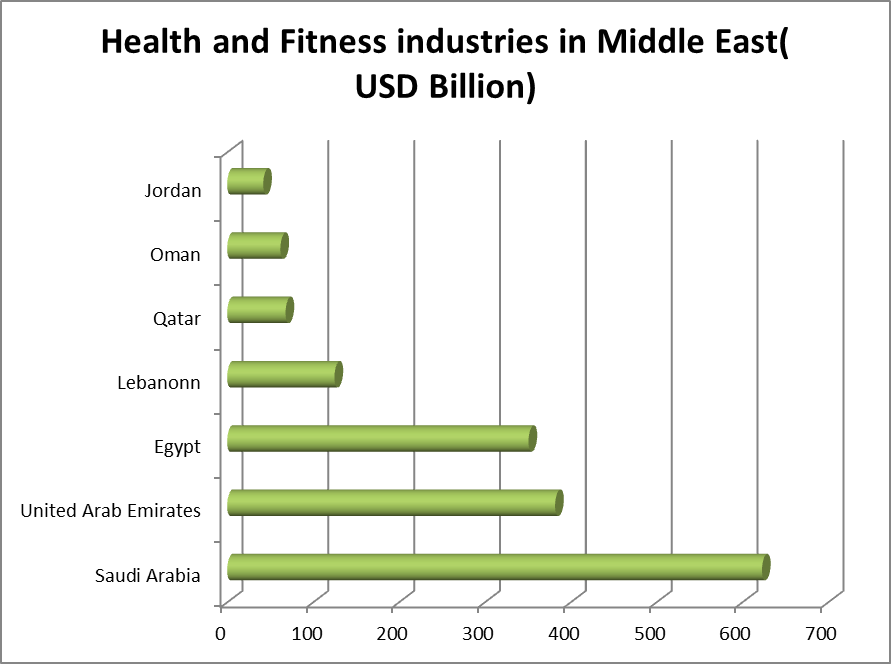
Major Socities and Associations Related to Food and Nutrition
USA
Food and Beverage Association of America
International Association of Operative Millers
International Association of Operative Millers
American Frozen Food Institute
National Frozen & Refrigerated Foods Association
International Dairy-Deli-Bakery Association
International Foodservice Distributors Association
Federal Institute for Risk Assessment (BfR)
Minister of Agriculture and Food
American Wholesale Marketers Association
Europe
Association of European Manufacturers and Formulators of Enzyme Products
European Food and Drink Industry
European Food Safety Authority
Federal Institute for Risk Assessment
Federation of European Specialty Ingredients
Norwegian Food Safety Authority
European Food Safety Authority
European Food Information Council
Federation of European Food Additives and Food Enzymes Industries
Federal Ministry of Food, Agriculture and Consumer Protection
European Flavour and Fragrance Association
Norwegian Ministry of Agriculture and Food
European Crop Protection Association
Natural Food Colours Association
Asia Pacific
Seafood Exporters Association of India
Singapore Food Manufacturers' Association
Food & Consumer Products of Canada
Canadian Food Exporters Association
Canadian Health Food Association
Canadian Food Exporters Association
Food Manufacturer - Food and Drug Administration Philippines
Association of Food Scientists & Tech
Korean Food for the Hungry International Malaysia
Singapore Association of Food Equipment Manufacturers & Suppliers (SAFEMS)
Russian-Association-of-Tea-and-Coffee-Producers-Rustea coffee
Food and Drug Administration (Philippines)
Ministry of Food and Drug Safety
Food Safety and Quality Division
The Asia and Pacific Seed Association
Related Conferences
- 11th World Congress on Food Chemistry & Food Microbiology, August 30-31, 2018 Dubai, UAE
- International Conference on Food Safety and Health August 30-31, 2018 Dubai, UAE
- 2nd International Conference on Nutrition, Food Science and Technology April 08-09, 2019 Abu Dhabi, UAE
- 21st International Conference on Food & Nutrition, July 25-26, 2018 Vancouver, Canada
- 8th International Conference on Food Safety and Regulatory Measures June 11-12, 2018 Barcelona, Spain
- 22nd World Congress on Food Sciences & Nutrition September 19-20, 2018 Hong Kong
- 3rd International Conference on Food & Beverage Packaging July 16-18, 2018 Rome, Italy
- European Food Chemistry Congress July 26-27, 2018 Amsterdam, Netherlands
- International Congress on Food Processing, Safety & Packaging, September 20-21, 2018 Prague, Czech Republic
- 19th Nutrition and Food Summit September 26-27, 2018 San Antonio, Texas, USA
- 21st International Conference on Food Technology & Processing, October 04-06, 2018 London, UK
- 22nd International Conference on Food Science & Nutrition October 11-13, 2018 Moscow, Russia
- World Food Science and Technology Congress October 15-16, 2018 Greece, Athens
- 21st Global Summit on Food Processing, Safety & Technology September 28-29, 2018 Chicago, Illinois, USA
- Innovations in Food Science and Human Nutrition Conference Sep 13 - 15, 2018, Rome, Italy (Hotel Rome Pisana)
- 3rd International Conference on Food Science & Technology Frankfurt, Germany October 25-27, 2018
- 2nd International Conference on Food Science, Nutrition & Probiotics August 06-08, 2018, Berlin, Germany
- International Conference on Nutritional Science and Food Technology Rome, July02-03, 2018
- International Congress on Food Technology October 10-12 2018, Cappadocia, Turkey
- 3rd International Conference on Food Science and Nutrition Engineering July 23-25, 2018, Chengdu, China
- 20th International Conference on Food Science and Nutrition London, United Kingdom June 28 - 29, 2018
- 3rd International conference on Agricultural and Food Sciences November26 – 28, 2018 Bangkok, Thailand
- 3rd World Summit & Expo on Food Technology and Probiotics October 25-26, 2018 at Prague, Czech Republic
- 2nd International Conference on Food Science and Bioprocess Technology October 1-3, 2018 Frankfurt, Germany
- International Food Science and Agrotechnology Conference August 7-9, 2018 at Universiti Malaysia Terengganu (UMT)
- Euro-Global Conference on Food Science, Agronomy and Technology 20–22 September 2018 Rome, Italy
10th World Congress on Nutrition & Food Sciences
Nutrition 2017 Report
The 10th World Congress on Nutrition & Food Sciences took place at Osaka, Japan, from May 29-31, 2017. It was organized by Conference Series and generous response was received from the Editorial Board Members of OMICS International Journals as well as from eminent scientists, talented researchers, and young student community. Researchers and students who attended from different parts of the world made the conference one of the most successful and productive events in 2017 from Conference Series. The three-day program witnessed thought-provoking keynote and plenary presentations from experts in the field of Nutrition & Food Science Experts, highlighting the theme, “Forum for innovations in Nutrition, Food Sciences, and Public Health”.
The meeting was carried out through various sessions, in which the discussions were held on the following major scientific tracks:
- Food Processing & Food Technology
- Nutrition in Developing Countries
- Nutritional Value & Food Quality
- Plant Nutrition & Livestock Nutrition
- Food Disorders & Nutritional Disorders
- Geriatric Nutrition Public Health Meetings
- Food Toxicology & Nutritional Toxicology
- Nutritional Neuroscience & Eating Disorders Public Health Meetings
- Renal Nutrition & Metabolism
- Nutritional Biochemistry
- Dietary Supplements & Functional Foods
- Nutrition Metabolism
- Food Science and Chemistry
- Public Health and Research
- Sports Nutrition and Kinesiology
- Clinical Nutrition
- Obesity, Diabetes & Endocrinology
- Cancer Nutrition
- Diet & Appetite
- Vitaminology & Lipidology
- Pediatric Nutrition & Maternal Nutrition
- Cardiovascular Nutrition
- Nutrition Education
- Human Nutrition & Dietetics
- Health Nutrition & Aging Nutrition
- Probiotics & Prebiotics
- Nutraceuticals & Medicinal Foods
- Nutritional Therapy & Nutritional Treatments
- Food Communications & Nutrition Communications
- Nutritional Epidemiology & Malnutrition
- Holistic Nutrition & Integrative Nutrition
- Food Immunology & Nutritional Immunology
- Food Metabolomics & Nutritional Metabolomics
The highlights of the meeting were the eponymic keynote lectures from
Yuanlong Pan, Nestle Purina Research, USA
Alison B Shepherd, Vocare Group, UK
Nutrition 2017 played an important role in promoting multidisciplinary interactions between science and medicine to enhance research in Nutrition & Food Science. The program covered current and emerging research innovations in the field of Nutrition and Food Science.
We would specially thank the Moderators of the Nutrition 2017 Yuanlong Pan, Nestle Purina Research, USA and Alison B Shepherd, Vocare Group, UK for their contribution for the conference.
We are obliged to the various delegates from companies and institutes who actively took part in the discussions. We sincerely thank the Organizing Committee Members and Editorial board of Nutrition 2017 for their gracious presence and continuous support throughout the proceedings of this event. With the valuable feedback and generous response received from the participants of the event, Conference series llc LTD would like to announce the commencement of “World Congress on Food and Nutrition “December 10-12, 2018 Dubai, UAE.
An orange a day keeps macular degeneration away (the eye doctor away)
People who frequently consume oranges are less likely to progress macular degeneration than people who do not eat oranges. Individuals who consume at least one orange each day have more than a 60% less chance of expanding late macular degeneration 15 years afterward. Macular degeneration is the chief reason of legal blindness, responsible for 50 percent of all cases of blindness. Mostly, adopting a healthy lifestyle and regular eye testing has been shown to reduce the risk of losing sight from this disease, but this is the first time a particular ingredient has been identified.
Flavonoids are dominant antioxidants found in majority fruits and vegetables, and they have significant anti-inflammatory benefits for the immune system. Common foods that contain flavonoids such as tea, apples, red wine and oranges. Flavonoids in oranges seem to help prevent against the eye disease.
Intake more oranges and grapefruit can ease hazard of stroke, heart illness, cancers, macular degeneration and cognitive disability. The enchanted properties of these sweetly sectioned fruits are thanks to their flavonoid substance; flavonoids are bioactive compounds, and they can be found in fruits, vegetables, nuts, dried beans and lentils, cocoa, tea and red wine. The flavonoids in oranges and grapefruit – called flavanones – have moreover been connected to more advantageous brain cells, strengthen blood vessels and diminished inflammation. And in addition to flavanones, citrus natural product to contains vital measurements of vitamins A and C, folate, potassium, thiamine, calcium, magnesium and fibre.
Mushroom Nutraceuticals for improved nutrition and better human health
Mushrooms have always been valuable and esteemed due to their enormous role in curing various degenerative diseases. Also their distinctive taste and flavour make them a demanding food for everyone’s plate. Due to their chemical composition, nutritional value and therapeutic properties has lengthened vigorously during the last few years. Mushrooms contain 50 to 65% total carbohydrate, 19 to 35% proteins (with numerous biological and medicinal actions such as lectins) and 2 to 6% fat content of their dry matter.
In mushrooms unsaturated fatty acids are found to be chief over saturated fatty acids principally palmitic acid, oleic acid and linoleic acid, while the quantity of linolenic fatty acids is very partial. Mushrooms rich in fat soluble vitamins together with ergosterol content are supposed to be the only vegetarian source for vitamin D.
Data on fibre content and composition is partial but polysaccharides like β-glucans increase the nutritional assessment of mushrooms. It has been perceived and established that mushrooms are wonderful food with their enormous nutraceutical properties. And for this one of the details is the presence of bioactive molecules i.e. β-glucans, triterpenoids, antioxidants etc. These molecules are not only medicinally strong but also immune-modulators.
Genes have no effect on consumption of total calories, carbohydrates, fat
Excess weight and obesity have turn into a global health problem. According to the World Health Organization, 39 % of adults in EU countries suffer from overweight, in Germany more than 50 % of adults have overweight. A large number of adults are overweight which is mainly due to the modern lifestyle which is categorized by low physical activity and consumption of high-calorie foods. Furthermore, genetic factors play an important role in the occurrence of obesity. Moreover, genetic factors play a role in the occurrence of obesity. Thus far, nearly a hundred genes (loci) have been recognized which are associated with the body mass index (BMI). Though, the functioning of these genes, as well as the biological mechanisms behind them, is still largely unknown. The study of the link between genetic factors and nutrition can shed light on whether the genes which are linked to BMI play a role in nutrition.
Hence, so far there exist no suggestions that certain genetic factors are linked with the total consumption of calories, carbohydrates, and fat. The new state of the proposal is still too inadequate for deriving individual nutritional recommendations based on genetic information. In all studies, it is found that the fat mass and obesity (FTO) linked gene as well as the melanocortin 4 receptor gene (MC4R), therefore it is concluded that there exist no indications that certain genetic factors are allied with the total intake of calories, carbohydrates, and fat.
Eat Grapes and Prevent Cancer, Kidney Disease, and Other Health Issues
Grapes are rich in vitamins such as A, C, K, B6, phytonutrients, like phenols and polyphenols, etc. But primarily they are an excellent source of magnesium, potassium, minerals, phosphorous, and sodium, function as an excellent enhancement to health.
Besides, they contain a lot of water, which possess the body hydrated and supplies antioxidants, fiber, healthy carbs, and protein. Therefore, they are useful for reducing the damage done by the free radicals and even decelerate aging. Moreover, they maintain an energetic and a healthy lifestyle. Grapes have multiple health profits, most of which are exceptionally favourable for the overall health. Most significant benefits that grapes provide to health -
Expand Eye Health
Grapes can lift the eye health by opposing the oxidative stress and reacting to the alterations at a cellular level. Additionally, they comprise a huge amount of proteins in the retinas. Beneficial for Kidneys
Grapes contain a lot of water. Thus, they are useful for detoxifying the body from all the toxic, but more prominently, they can help the kidney by inducing urination. As well, grapes can ease the stress and pressure on the kidneys.
Suitable for the Bones
As grapes contain calcium, they can be a tremendous natural medicine for the bones. As an outcome, they might be able to relieve knee pain from symptomatic osteoarthritis. Moreover, grapes comprise antioxidants which can progress the flexibility of the joints along with mobility.
Prevent Cancer
Grapes rich in antioxidants. So, they are able to slow down numerous types of cancer such as esophageal, pancreatic, prostate, mouth, and lung cancer.
Prevent Diabetes
Grapes might be able to diminish the chance of rising diabetes. Mainly, by consuming dried grapes. Therefore, add grapes to diet if suffering from obesity.
Keto diet: link to diabetes risk
Ketogenic diets that are low-carbohydrate, high-fat diets that have been exposed to decrease weight loss may cause an increased risk of Type 2 diabetes in the primary stage of the diet. They change metabolism so that energy derives from fat instead of sugar. Type 2 diabetes is one of the most persistent challenges of now a days and its vital root has not been fully understood. Ketogenic diets, which are low in carbohydrate and high in fat, are known to lead to weight loss and have been considered to be healthy. These results raise new questions about ketogenic diets and whether or not they are actually healthy.
Diabetes is one of the major health concerns we face. Even though ketogenic diets are well-known to be healthy, our results show that there may be an increased risk of insulin resistance with this type of diet that may principal to Type 2 diabetes. Insulin is released in the blood and control blood sugar levels including signaling the liver to stop generating sugar. If this system is reduced and the body does not use insulin appropriately, which is called insulin resistance, individuals are likely to progress high blood sugar levels. For ketogenic diets this process for controlling blood sugar levels does not effort accurately and there was insulin resistance in the liver. When the liver is unable to respond to normal levels of insulin to control blood sugar levels this may lead to an increased risk of Type 2 diabetes.
Avocado by-products: Nutritional and functional properties
An avocado a tropical and subtropical fruit that's local to Mexico and Central America; avocado is picking up increasing worldwide acknowledgment and has received widespread showcasing and a wide distribution due to its significant nutritional benefits for human health. Mexico yields more than 30% of avocados worldwide, implying the most producer and exporter of avocado, which has gotten to be a crop of tall interest and has an extraordinary economic effect on Mexico.
The entire avocado is rich in compounds including the pulp, peel and seed, which in turn comprise of numerous health benefits, such as antioxidant, antimicrobial and anticancer activities, as well as dermatological uses and others. Avocado seeds are disposed of as by-products during pulp consumption or processing despite their high starch content. The granules of native avocado seed starch comprises of an oval shape and A-type crystallinity pattern, whereas the acetylated shape yielded granules with an adjusted bell shape and C-type design.
The solubility and swelling control of the local and acetylated forms of avocado seed starch increased with increasing temperature; however, at 55°C and 65°C the acetylated shape shows a higher solvency list. The acetylated avocado seed starch showed decreased breakdown and cooperative energy during solidifying, as well as more prominent oil assimilation, compared to the local shape. These come about showed that acetylation progressed the functional properties of avocado seed starch, subsequently expanding its potential for utilizing nourishment items. In a review it showed several nourishment ingredients can be obtained from avocado squanders, especially from the premium-grade fats or extricates with a high functional power.
Consuming milk at breakfast lowers blood glucose throughout the day
A change in breakfast schedule may give benefits for the administration of type 2 diabetes, inspected the impacts of devouring high-protein milk at breakfast on blood glucose levels and satiety after breakfast and after a moment dinner. Raised blood sugar levels are a symptom of diabetes. According to WHO, in the year 2014, 422 million people were spotted with diabetes through the world. When breakfast cereal is consumed along with milk decreases postprandial blood glucose level in comparison with water and high dairy protein level decreases postprandial blood glucose concentration compared with normal dairy protein concentration. The high-protein treatment besides reduced appetite after the moment dinner compared with the low-protein identical. Milk with more sum of whey protein has a moo impact on pre-lunch blood glucose, resulting in a more noteworthy drop than that given by standard drain. Type 2 diabetes and obesity as driving concerns in human wellbeing. Hence, there's a driving force to create dietary techniques for the chance diminishment and administration of weight and diabetes to enable shoppers to make strides their individual health. Milk consumed with high amount of carbohydrate breakfast decrease blood glucose even after lunch, and high-protein milk had more effect on glucose levels. Nutritionists have always worried the importance of a healthy breakfast. Diabetics need to be extra careful about their diet. They should make sure their meals are well-balanced. Breakfast must comprise protein rich foods and vegetables along with good carbohydrates.
Purple Potatoes Nutrition Facts
Consuming a rainbow of colorful foods is a good mode to ensure you get a huge variety of nutrients for healthier life. In addition to eggplant and grapes, purple potatoes make an upright choice for adding more deep violet color to diet. These flavoursome potatoes have a sweet and nutty flavor and make a delightful starchy side dish or a more colorful gnocchi.Nutritionally, the purple potato is an excellent source of vitamin C and a good source of iron and fiber comparable to other varieties of white-fleshed potato. Purple potatoes comprises of about 200 calories, 6 grams of protein, 43 grams of carbs, 3 grams of fiber, and is also fat free.
Anthocyanins are the pigments in the potato that give it the purple shade. The purple pigments are antioxidants that protect cells from oxidative damage and may reduce your risk of heart disease and certain types of cancer offer extra health benefits. Anthocyanins may protect brain to prevent cognitive decline. Scientists are searching the health benefits of the dominant pigments, and ponder the benefits are due to a distinctive component in the compounds beyond their antioxidant capabilities.Many people, especially pregnant women, scuffle to get sufficient iron from their diet. Iron plays a very vital role in the transportation of oxygen to all the tissues in body. Not receiving adequate iron in diet affects red blood cell production and function, while vitamin C helps body absorb iron from the food. As a source of both iron and vitamin C, purple potatoes make a perfect food choice for receiving more iron.
Diet has bigger impact on emotional well-being in women than in men
The basics of a healthy diet are comparable for men and ladies. Eat when hungry, halt when full. Select natural products, vegetables, whole grains, protein, and dairy sources that are low in saturated fat. Avoid trans-fat, excessive sodium, and included sugar. Whereas these common suggestions apply to everybody, a more point by point nutrition and exercise plan to carry out the suggestions do vary by gender. Anatomical and functional contrasts in men's and women's brain dictate susceptibility to mental disease. However, little is known around the part of dietary designs in gender-specific mental wellbeing. Men are more likely to encounter mental well-being until wholesome lacks emerge.
Women, in any case, are less likely to involvement mental well-being until a balanced diet and a healthy lifestyle are taken after. Women are at a greater chance for mental distress when compared to men, and emphasize the part of a nutrient-dense diet in mental wellbeing. The greatest takeaway is that women may require a bigger range of supplements to support disposition, compared to men. These discoveries may clarify the reason why ladies are twice more likely to be analysed with uneasiness and sadness and endure from longer scenes, compared to men. Today's diet is high in energy but poor in key nutrients that support brain anatomy and usefulness. Women are less likely than men to encounter positive mental wellbeing until they accomplish a balanced diet. In the meantime, men are more likely to experience great mental health until nutritional deficiencies emerge. Women are at a better chance of destitute mental health than men.
Evidence suggests that our ancestors' eat less, which was a high-energy-nutrient-dense diet, contributed altogether to brain volumes and cognitive advancement of humankind. Males and females had diverse physical and emotional responsibilities that will have required diverse energy necessities and food preference. In this way, gender-based differential food and energy intake may clarify the differential brain volumes and connectivity between females and males. Hence, a potential mismatch is happening between our contemporary diet and the evolved human brain which is disturbing the normal functionality of certain systems within the brain.
Strawberries could help reduce harmful inflammation in the colon
Millions of individuals around the world endure from Crohn's malady and ulcerative colitis, or IBD. In existence, however, it's still a subject that hardly anyone talks approximately as well private, as well humiliating. Typically since chronic inflammation of the intestinal mucosa is went with by stages of difficult stomach issues, frequent and sometimes bloody diarrhea, nausea and weakness over many years. In spite of seriously investigate, the causes for the improvement of Crohn's illness and ulcerative colitis are still not totally clear to date, an exchange of hereditary inclination, chance and natural components such as smoking, eating propensities and cleanliness, as well as a disturbance of the intestinal mucosa's boundary work are respected as triggers.
Inflammatory bowel disease (IBD) may be a set of painful conditions that can cause severe diarrhoea and fatigue. One of them called Crohn's disease can affect any part of the gastrointestinal tract, and the other is ulcerative colitis generally affects the colon and the rectum. Medications and surgery can cure the conditions. But presently analysts report that a basic dietary mediation seems moderate colonic inflammation and move forward gut health. In this case, a strawberry or maybe, less than a cupful of strawberries — a day may offer assistance keep the doctor away.
The stationary way of life and dietary habits of numerous individuals in this country high-sugar, high-animal-fat, but low-fiber diets may advance colonic inflammation and increase the chance of Inflammatory bowel disease (IBD). IBD incorporates both Crohn’s disease, which can contaminate any portion of the gastrointestinal tract, and ulcerative colitis, which is characterized by inflammation of the colon and rectum. Individuals with IBD too have the next chance of colorectal cancer. The dietary consumption of fruits and vegetables has been related with a lowered hazard of IBD. To set up an successful and viable approach to diminish colonic irritation in both IBD patients and the common populace.
Do not change your diet on your own
Crohn's disease or ulcerative colitis patients should not alter their diet on their own, but only after referring with their doctor. Gut health can be enhanced and inflammation of the colon in inflammatory bowel diseases can be lessened by intake strawberries daily.
Women Health and Nutrition
A balanced diet is a basis of health. Women, like men, should enjoy a variety of healthful foods from all of the foods groups that includes whole grains, fruits, vegetables, healthy fats, low-fat or fat-free dairy and lean protein. However women also have different nutrient needs, and, during every stage of a woman's life, these needs change.
EatingRight
Nutrient rich foods provide energy for women's busy lives and help to ease the risk of disease. A healthy eating plan regularly includes:
- At least three particle equivalents of whole grains such as whole-grain bread, whole-wheat cereal flakes, whole-wheat pasta, brown rice or oats.
- Three portions of low fat or fat free dairy products containing milk, yogurt or cheese.
- 5-5.5 particle equivalents of protein such as lean meat, poultry, seafood, eggs, beans or pea nuts and seeds.
Iron-rich Foods
Iron is one of the keys to good health and energy levels in women before menopause. Foods that provide iron comprise chicken, turkey, red meat, pork, fish, kale, spinach, beans, lentils and some fortified ready-to-eat cereals. Plant-based sources of iron are more easily absorbed by the body when eaten with vitamin C-rich foods. So eat invigorated cereal with strawberries on top, spinach salad with mandarin orange slices or add tomatoes to lentil soup.
Folate (and Folic Acid) During the Reproductive Years
When women reach motherhood age, they need to eat enough folate (or folic acid) to help reduce the risk of birth deficiencies. The necessity for women who are not pregnant is 400 micrograms (mcg) per day. Including sufficient amounts of foods that naturally contain folate, such as citrus fruits, beans, leafy greens, and peas will benefit in growth of this B vitamin in our body. There also are many foods that are invigorated with folic acid, such as breakfast cereals, some rice and breads. Eating a variety of foods is suggested to help meet nutrient needs, but a dietary supplement with folic acid also may be necessary. This is mainly true for women who are pregnant or breast-feeding, since their daily need for folate is higher, 600 mcg and 500 mcg per day, respectively. Be sure to check with our physician or a registered dietitian nutritionist before taking any supplements.
Daily Calcium and Vitamin D Requirements
For strong bones and teeth, women need to eat a variety of calcium-rich foods every day. Calcium retains bones strong and aids to reduce the risk for osteoporosis. Some calcium-rich foods include low-fat or fat-free milk, sardines, yogurt and cheese, tofu (if made with calcium sulfate) and calcium-fortified foods including juices and cereals. Sufficient amounts of vitamin D also are essential, and the need for both calcium and vitamin D rises as women get older. Good sources of vitamin D include fatty fish, such as salmon, eggs and fortified foods and beverages, yogurts and juices.
Foods and Beverages to Limit
To maintain weight in check at any age, women should evade excess calories from added sugars, saturated fat and alcohol.
- Limit sweetened beverages, comprising regular soft drinks, pastries, candy, cookies, and other desserts.
- Limit alcohol intake to one drink per day, if one can choose to drink and are of legal age. One drink is equal to 12 ounces of beer, 5 ounces of wine or 1.5 ounces of liquor.
Balancing Calories with Activity
Since women typically have fewer muscles, more body fat and are smaller than men, they want fewer calories to maintain a healthy body weight and activity level. Physical activity is a chief part of a woman's health. Systematic activity benefits with weight control, muscle strength and stress management.
Cholesterol levels and dietary fats
Cholesterol could be a fat that's vital to numerous metabolic functions and is a basic part of all the body’s cell membranes. Cholesterol is created within the body from the food we eat and is delivered within the liver. Blood lipids (fats) that contain cholesterol incorporate low thickness lipoprotein (LDL) and high density lipoprotein (HDL). LDL cholesterol can lead to plaque shaping on arteries. HDL cholesterol helps the body to remove cholesterol from the body and makes it harder for plaque to make within the arteries. Saturated and trans fats within the diet tend to extend LDL cholesterol within the blood. Common sources of saturated fats incorporate animal products (butter, meat fat, beef, lamb, chicken skin and full cream dairy foods), and prepared foods like pastries and biscuits.
Trans fatty acids and saturated fats, such as elaidic acid, are formed when monounsaturated or polyunsaturated vegetable oils are hydrogenated and hardened to make margarines. This applies especially to the harder vegetable fat and shortening utilized by the food industry in items such as cakes and rolls. Most monounsaturated and polyunsaturated table margarines sold in Australia have exceptionally low levels of trans fatty acids. The little amounts display in table margarines are not significant and don't negate the benefits of substituting these margarines for saturated fats like butter. Trans fatty acids too happen normally in a few meats, butter and dairy items. These trans fats tend to extend the LDL cholesterol.
Sleep loss linked to night-time snacking, junk food cravings, obesity, and diabetes
Poor quality of sleep appeared to be a major indicator of junk food cravings, and it was related with a more prominent probability of participants announcing obesity, diabetes and other health issues. Laboratory studies suggest that sleep deprivation can lead to junk food cravings at night, which in turn leads to expanded unhealthy snacking at night, which at that point leads to weight gain. This association between poor sleep, junk food desires and unhealthy night time snacking may represent a vital way that sleeps makes a difference direct metabolism.
Junk food cravings were related with double the increase within the probability of night time snacking, which was related with an increased chance for diabetes. Poor sleep quality appeared to be a major indicator of junk food desires, which garbage nourishment desires were related with a more noteworthy probability of members announcing weight, diabetes and other wellbeing problems. Sleep hardship can lead to junk food longings at night, which leads to expanded unfortunate snacking at night, which at that point leads to weight pick up. This association between destitute rest, garbage food desires and unhealthy night-time snacking may represent a critical way that sleep makes a difference direct metabolism.
Sleep is progressively recognized as a vital factor in health, nearby nutrition. Sleep and eating patterns are connected and work together to advance health. Sleep influences memory, mental health, stress, alertness and decision-making and natural factors influence sleep. Night-time Snacking: Prevalence and Associations with Poor Rest, Health, Weight, and Diabetes.
How fruits got their eye-catching colors
Ruddy plums, Green melons, Purple figs, Ripe natural products come in a cluster of greens, yellows, oranges, browns, reds and purples. Researchers say they have modern prove that plants owe their rainbow of natural product colors to the diverse creatures that eat them. That the shinning red of a berry may be a signal to hungry birds - here I am, come eat me isn't a modern thought. Since the late 1800's researchers have guessed that the colors of fleshy natural products advanced to urge the consideration of certain creatures, which carry them off and in the long run drop their seeds on the timberland floor. But prove to bolster the thought has been blended at best, researchers say. Portion of the issue is that numerous considers of natural product color expect we see color as other creatures do, doling out natural products to a handful of color categories such as orange or yellow concurring to how people see them.
There are great reasons to question whether red to us looks the same way it does to. People have three sorts of color-sensing cone cells within the eyes, each one sensitive to diverse wavelengths of light. But most other warm blooded creatures have only two sorts of cone cells. And birds have four, which makes a difference them see a run of colors we can’t see. A natural product that looks blackish to us, for case, may really reflect bright rays, which birds can see but people can’t. With the exception of a handful of other primates, no other creature on Earth sees color the way that we do. Many studies too neglect to consider other reasons why natural products create their particular colors. For case, a few plant species may essentially take after their closest hereditary relatives, bearing natural products that are pink or brownish since their common ancestors did too. Or fruit color might be an item of natural components such as scope, temperature, or properties of the soil.
Fruit colors of closely related species are no more comparative than expected by random chance. In any case, fruits that are basically eaten by mammals such as monkeys and primates do in fact have higher reflectance within the green portion of the range, though natural products scattered by birds reflect more within the red -probably since birds tend to depend more intensely on their sharp color vision than numerous other creatures, and reds are less demanding to spot against the green foliage. The discoveries lend strong support to the thought that creature dispersers made a difference drive the evolution of fruit colors in tropical plants and that plants whose natural products reflected bright light also tended to have UV-reflecting leaves, proposing that fruit color is at slightest mostly a response to natural variables that influence the entire plant -such as protection from the sun's harming rays. Other fruit characteristics such as odor, size or texture. It may be that visual prominence frequently accomplished utilizing red entices birds, but fragrance is more imp for luring animals whose sense of smell is stronger than their sight.
Apple: The Original Super fruit
Apples keep the doctor away since they are one of nature’s best superfoods. There’s so much nourishment in apples fiber, antioxidants, vitamin C, phytonutrients and more! Apples are one of the most advantageous foods an individual can eat. They are high in fiber and vitamin C, and they are too low in calories, have only a follow of sodium, and no fat or cholesterol. Apples are high in polyphenols, which work as cancer prevention agents. These polyphenols are found in both the skin of the apples as well as within the meat, so to get the greatest amount of benefits, eat the skin of the apple. All of these benefits cruel that apples may moderate the impacts of asthma and Alzheimer's infection, whereas helping with weight administration, bone wellbeing, pulmonary work and gastrointestinal protection. Frequently called a "miracle food" and "nutritional powerhouse," an apple a day truly may keep the doctor away.
Health benefits
- Lower “bad” cholesterol: Procyanidins in apples (a type of flavonoid) have high antioxidant action and lower low-density lipids (LDL or “bad” cholesterol).
- Help your heart: By decreasing cholesterol, the high polyphenol content from frequent apple consumption could also lower cardiovascular disease risk.
- Stimulate healthy digestion: Apple polyphenols and fiber may also strengthen the microbiome in gut.
- Safeguard your mind: The high levels of antioxidants in apples protect against neurodegenerative diseases like Alzheimer's and Parkinson's and keep up brain performance.
Apples are loaded with vitamin C. Almost half of an apple's vitamin C substance is fair beneath the skin, so it's a great thought to eat apples with their skins. Apples contain insoluble fiber, which gives bulk within the intestinal tract. The bulk holds water that cleanses and moves nourishment rapidly through the digestive system. Regular intake of apples has been appeared to have cardiovascular benefits. This is often due to two properties of apples: the fiber that they contain and the polyphenols that are found in tall amounts. In expansion to digestion-aiding insoluble fiber, apples have solvent fiber, such as pectin. This supplement makes a difference anticipate cholesterol from building up within the lining of blood vessels, which in turn makes a difference avoid atherosclerosis and heart disease. When it comes to polyphenols and antioxidants, they work within the cell lining to diminish oxidation coming about in bringing down chance of cardiovascular disease. Those who eat more apples have a lower hazard of stroke. Researchers credited the results to quercetin, an antioxidant in apples. There are respiratory benefits to eating apples, as well. Apples' antioxidant benefits can offer assistance lower the chance of asthma. Eating entire apples gives filling, health-promoting fiber (up to 5 grams per apple!) and plant-based cancer prevention agents, who offer assistance support resistant work. Most are stacked sources of actually happening sugar (“apple juice concentrate”) furthermore water, making it higher in calories without keeping you fulfilled. Additionally, the preparing that removes pulp and clarifies the juice too diminishes the sum of cancer prevention agents.
Apples and cancer
The antioxidant substance of apples positions among the highest for natural products, and inquire about appears that cancer prevention agents offer assistance avoid cancer. Lung cancer chance can particularly be brought down through apples' cancer prevention agents, concurring to Flores. Individuals who routinely eat apples, onions and white grapefruit cut their lung cancer chance in half.
Health risks
Furthermore, apples are acidic, and the juice may harm tooth finish. Numerous individuals eat apples gradually, which increments the probability that acids will harm tooth finish. Snacking on acidic foods all through the day is the foremost harming, whereas eating them at supper times is much more secure. An apple a day is sweet, but taking all day to eat the apple can harm teeth. Dentists prescribe cutting up apples and chewing them with the back teeth. They moreover prescribe flushing the mouth with water to assist wash absent the corrosive and sugars.
Nutrition and Oral Health
The single most vital cause of dental caries is the occurrence with which sugar-containing foods and drinks are consumed. The dietary advice offered in relation to oral health should be based on the reduction of between-meal snacking of sugary nourishments and drinks. Diet (which includes what you drink) plays a major part in tooth decay and enamel erosion. Mouth is normally hospitable to all sorts of microbes. A few of these microorganisms are supportive and a few are destructive, and numerous of the harmful ones flourish on a consistent supply of sugar. As they process sugar from diet, these microbes produce acids that can eat into the enamel of your teeth, forming little gaps called cavities. If cleared out untreated, tooth decay can worsen, become very difficult, and threaten the survival of teeth. That’s why it is critical to avoid food and drinks with included sugar. In case you've got a sugar craving (and we all do from time to time), select fresh fruit rather than a donut or sweet bar. Luckily, there's no prove that sugars in whole grain foods, entire fruits and vegetables, and in starch-rich staple foods like bread, rice and potatoes are harmful to teeth.
Soft drinks, however, are a double whammy for teeth; numerous not as it were contain lots of sugar up to 10 teaspoons per 12-ounce can but they are too highly acidic. This implies they dissolve teeth on contact, indeed before the microscopic organisms in your mouth have handled the sugar these drinks contain. But indeed in case they are sugar-free, the acid can still harm your teeth. So it would be better to escape soda, sports drinks, energy drinks and canned iced tea. If you are doing once in a while have a soda, wash a few water in your mouth afterwards but do not brush your teeth for at least an hour! Doing so might make it easy for tooth enamel, as of now relaxed up by acid, to be eroded away by brushing.
Drinking lots of water can assist you keep up a healthy supply of saliva, which ensures teeth by neutralizing corrosive. You'll be able moreover neutralize the acid in your mouth after a sugary snack by following it up with a bit of cheese. Finally, keep in mind that it's not fair what you eat that influences the level of acidity in your mouth it's also when. Snacking all through the day, particularly on chips, crackers, cookies or sweet, implies that your spit never gets the chance to neutralize the harmful acids being produced. So if you eat desserts, do it as it were at mealtimes. As an included incentive, you may find this helps you maintain a healthy weight, too!
Marijuana Use Tied to Serious Diabetes Complication
Cannabis, or marijuana, could be a drug derived from the cannabis plant that's utilized for recreational utilize, therapeutic purposes and religious or spiritual rites. Cannabis plants deliver a one of a kind family of compounds called cannabinoids. From these, the main psychoactive (brain function-affecting) compound is tetrahydrocannabinol (THC). Cannabis contains high levels of THC, as well as other psychoactive chemicals, which deliver the 'high' users feel when breathing in or ingesting it. Two other compounds, tetrahydrocannabivarin (THCV) and cannabidiol (CBD) have been appeared to have benefits for blood sugar control and digestion system in diabetes considers.
Individuals with Type 1 diabetes are generally advised to keep their haemoglobin levels below 6.5 percent, but the cannabis users have average readings of 8.4 percent. This was said to represent hazardously lifted blood sugar that can increment the hazard of heart assaults, strokes, kidney disappointment, visual deficiency, removals, and death.
Individuals with type 1 diabetes who utilize marijuana may double their hazard of creating a life-threatening complication. Diabetic ketoacidosis (DKA), the condition happens when there's not sufficient insulin to break down sugar within the body, so the body burns fat for fuel instead. This triggers a build-up of chemicals known as ketones, which make blood more acidic and can lead to coma or death. Type 1 diabetes is an autoimmune malady that develops when the body's immune system mistakenly attacks the insulin-producing cells within the pancreas. Insulin is a hormone that channels the sugar from foods into the body's cells to be utilized as fuel. Individuals with type 1 diabetes not make sufficient insulin on their own. They must take shots or utilize an insulin pump to deliver the insulin they need to their bodies.
However, getting the dosage right could be a difficult adjusting act. Too much insulin can cause dangerous low blood sugar levels that make individuals shaky, confused and irritable, and if not treated, can cause somebody to pass out and conceivably to die. But too small insulin can lead to high blood sugar levels. Over a long time, high blood sugar levels can cause the serious complications related with diabetes, such as heart and kidney disease, vision problems and amputations. Too small insulin can moreover lead to DKA in as little as a few hours. Individuals with type 1 diabetes need to be locked in with their disease and manage insulin dosing always, even those on the pump with closed loop systems.
Conference Highlights
- Food Technology
- Nutraceuticals and Nutrition
- Nutrition and Dietetics
- Nutrigenomics and Nutrigenetics
- Animal and Plant Nutrition
- Prebiotics and Probiotics Nutrition
- Renal Nutrition and Metabolism
- Food and Nutrition Disorders
- Malnutrition and Malnourishment
- Food Toxicology
- Medicinal Food
- Food and Nutrition Therapy
- Food Safety and Management
- Advanced Food Analysis Techniques
- Food, Nutrition and Health
- Food Industry
- Indigeneity and Food
- Obesity, Diabetes, Cardiovascular Diseases, Gastrointestinal Diseases
- Pediatric Nutrition
- Women Health and Nutrition
To share your views and research, please click here to register for the Conference.
To Collaborate Scientific Professionals around the World
| Conference Date | December 10-12, 2018 | ||
| Sponsors & Exhibitors |
|
||
| Speaker Opportunity Closed | Day 1 | Day 2 | Day 3 |
| Poster Opportunity Closed | Click Here to View | ||
Useful Links
Special Issues
All accepted abstracts will be published in respective Our International Journals.
- Journal of Food Processing & Technology
- Journal of Probiotics & Health
- Journal of Nutrition & Food Sciences
Abstracts will be provided with Digital Object Identifier by




























